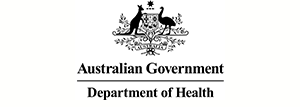What proportion of dementia is preventable in the Australian population?

Status completed
Start Date
End Date
Dementia, particularly Alzheimer’s disease and vascular dementia, is one of the leading causes of death and disability in older Australians.
This project aimed to model how modifying risk factors would impact dementia outcomes.
Introduction
Since there is no way of curing dementia, it is important to prevent the condition and delay its onset. Although we don’t have conclusive evidence that dementia can be prevented, providing prudent advice on likely risk factors may have specific benefits, can have broader benefits, and is unlikely to do harm.
Featured project resources
-
How can we better understand the risk factors for dementia?
Resource category:Podcasts
Date
About
Prudent advice on the prevention of dementia: Translating best evidence, using the 45 and Up Study cohort data, on the proportion of dementia that might be preventable in the Australian population
Project titleWhat is the issue?
Dementia, particularly Alzheimer’s disease and vascular dementia, is one of the leading causes of death and disability in older Australians. By 2050, it is estimated that more than 1.1 million Australians will be living with dementia, costing around $6.6 billion per year. Since there is no way of curing dementia, it is important to prevent the condition and delay its onset.
Previous research has shown that addressing people’s diet, physical activity, smoking, harmful alcohol consumption and level of education could help prevent dementia. Given that dementia mainly affects older people, delaying the onset by targeting these modifiable risk factors could have a major impact.
Although we don’t have conclusive evidence that dementia can be prevented, our approach is similar to the early approach to the prevention of coronary heart disease. Providing prudent advice on likely risk factors may have specific benefits, can have broader benefits, and is unlikely to do harm.
How did the project address the issue?
The aim of the project was to model how modifying risk factors would impact dementia outcomes, and develop prudent preventive advice using best available evidence.
We investigated dementia risks in the 45 and Up Study cohort. Using data from the cohort, we identified participants with dementia diagnosed since recruitment to the study (n~ 9,000 people) and investigated whether lifestyle, social, economic, environmental and health risks are associated with their progression to dementia.
Using data from the 45 and Up Study cohort, and other relevant cohorts where possible, we then modelled the impact of varying the exposure to the various risks identified and estimated the proportion of dementia that could be prevented or delayed through modifying them.
What is the relevance of the project for policy and practice?
Targeted population-level strategies to address the risk factors for dementia can reduce that risk and delay the onset and progression of dementia.
What are the outcomes?
This research can help advise the contribution of various risk factors for dementia in the Australian population and guide targeted population-level strategies.
Resources
-
How can we better understand the risk factors for dementia?
Resource category:Podcasts
Date
People
Lead investigators
Project team
-
Luciano Melo Luciano Melo has finished working with the Prevention Centre.
The Sax Institute -
Dr Xenia Dolja-Gore
The Sax Institute -
Professor Henry Brodaty
UNSW Sydney -
Mark Bartlett Mark Bartlett has finished working with the Prevention Centre.
The Sax Institute -
Dr Anita Goh
National Ageing Research Institute -
Professor Kaarin Anstey Professor Kaarin Anstey has finished working with the Prevention Centre.
UNSW Sydney -
Professor Cate D’Este Professor Cate D’Este has finished working with the Prevention Centre.
University of Newcastle






